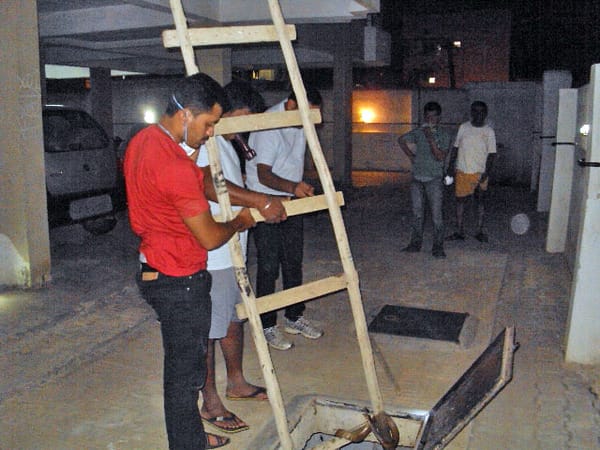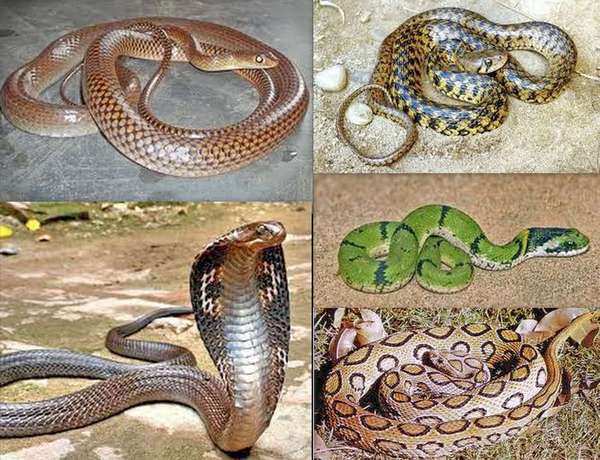Monsoon has brought Bangalore many things to rejoice, and a bag of worries as well. While the much-needed respite from the scorching heat is a welcome change, the rains are also the indicators to be more careful about the reptile and rodent menace that increases every year during this time.
It is not a rare sight to see houses flooded with water after a heavy downpour. This is especially so with houses which have been built on low-lying areas. This however poses a huge risk of reptiles, especially snakes, entering the houses. The city has been constantly reporting such cases over the last month. Calls have been pouring in on helpline numbers that have been set up by the BBMP as well as the wildlife rescue wings of some NGOs.
Adil Arif, Volunteer, BBMP Wildlife Rescue Cell, says, “These days we are basically rescuing snakes in and around individual houses/compounds, but never inside the house. People may have kept garbage, rocks or some unused junk behind which the snakes just go and take shelter during rains.”

PFA Wildlife Wing volunteers working to rescue the snakes from the sump.
When you find a snake, call:
People for Animals: +91 99000 25370
(E-mail: info@peopleforanimalsbangalore.org, rescueservice@peopleforanimalsbangalore.org)
BBMP: 100/ 080-22221188 (BBMP Wildlife Rescue-Snake Catcher Wing)
Just Dial: 08888888888 / 080-23333333
They catch reptiles to save them
People for Animals is a non-profit conservation organisation that works towards the rescue and rehabilitation of wildlife in the city. Kishan, General Manager, PFA narrates a very recent incident that involved the rescue of snakes. “An informer from Sarakki called and told us about snakes in the sump of their house. Even last year they had found many snakes. This year they discovered a rat snake and cobra at the bottom of the sump. When we went and checked, we found that the sump was 20-feet deep and that the snakes must have been there since 4-5 days. They had entered it through the open let-outs in the drainage canal.” The rescued snakes were then released into the wild.
Kishan states that urban Bangalore is a good habitat for snakes. “There is a lot of garbage here which invites rodents which in turn attract snakes. In a way it works like natural pest control,” he says. “These snakes would have been there from long, but they make their appearance only during monsoons and people feel that suddenly snake sightings have become more,” Adil adds.

PFA volunteers with the rescued snake (visible at the bottom of the ladder)
Comparing today’s urban wildlife scenario with the scenario a few years ago, Adil feels that earlier there wasn’t much urban development that we see today. “Earlier you would see more of greenery and open spaces where snakes could take shelter below the bushes or rocks. But now with too much development, they have no place to go. During monsoons, when rat-holes get flooded, the snakes come out and take shelter on top of a tree, an open drain or a dry, warm place.”
Kishan gives tips on how snakes can be prevented from getting into the drain pipes. “If there are open let-outs in drainage pipes, then the pipelining can be meshed to ensure that snakes don’t come in. Gaps between the pipes are also good for snakes to take shelter in.” He also says that snakes, especially, russell vipers are found in parking lots, usually when it is dark. Cement flooring which doesn’t absorb cold attracts snakes during monsoon as it provides them the much-needed warmth in the cold.
- Keep surroundings clean and free of garbage.
- Keep your home free of rats and other rodents.
- Get any garbage dump near your area cleared by the BBMP.
- Lock all the rat holes nearby your home.
- If you have a garden area, keep it tidy and well-maintained.
- Keep the pots one foot away from the wall.
- Turn the porch/verandah lights on if you are going out of your house to do any chores in the night.
- Close the toilet doors/ the lids of commodes when not in use.
- Close the lids of sumps properly; get any unwanted openings to sumps repaired.
- Close the openings of drainage pipes with meshes, so that the sewage can go out but snakes can’t come in.
But despite all the precautions taken, what if snakes enter a house along with the flood water? What are the means through which the citizens can call for help? “We ask people to call up an emergency number. It can either be 100, the BBMP control room or Just Dial,” explains Adil. The call is then directed to the volunteer who is close to the spot. He/she will then go and rescue the animal and relocate it to a conducive habitat.
19 reptile species in Bangalore
“Totally there are 19 species of snakes that one can see in Bangalore today,” informs Kishan. The most common are rat snakes, cobras, russell vipers and checkered keelbacks. “The number of cobras has gone up this year. The other most common snake i.e. checkered keelback lays about 100 eggs at a time. As a result it is one of the most common and widely sighted snakes all over India,” Kishan states. There are both venomous and non-venomous snakes that are sighted in the city. “But basically people treat all snakes as venomous. Even when we go on field, we know it is a common rat snake but people insist saying it is a cobra,” Adil observes.

Most common snakes seen in Bangalore’s urban wildlife scene. Clockwise from top right: Checkered Keelback, Green Keelback, Russell Viper, Cobra, Indian rat snake. Collage: Nalme Nachiyar
Live and let live; don’t kill them
Even as we talk about snake rescue, we cannot forget the other aspect that the wildlife wings or the rescue cells stress upon: Rehabilitation. The act of releasing/relocating a wild animal into a conducive habitat seems to be as crucial as its rescue. One reason for this is the gradual decrease in the natural habitats of animals. “We see that there is no open area for reptiles to survive on. Before we used to see lot of tree snakes and water snakes. But today with depleting water bodies and reducing number of trees we don’t see these snakes that commonly. The BBMP rescues maybe four or five bronze-back tree snakes in a year. The green keelback, which is water snake has also become a rare sight,” worries Adil.
The next time you see a snake, remember that it has the right to live like you. It is a part of this city. Call a helpline and ensure that the animal is returned to its natural/conducive habitat. Have a safe monsoon!
Any tips on how to do this?:
“Get any garbage dump near your area cleared by the BBMP.”
report 10 cobras sighted in the garbage dump
as advised in the article above, you may call BBMP Centralised number 080-22660000
Good idea Vaidya. we will do it!
Can someone post pictures of the 19 common snakes species found in bangalore+indicate which ones are venomous among them?
I live on a farm and recognize a few but not all 19 species
thanks